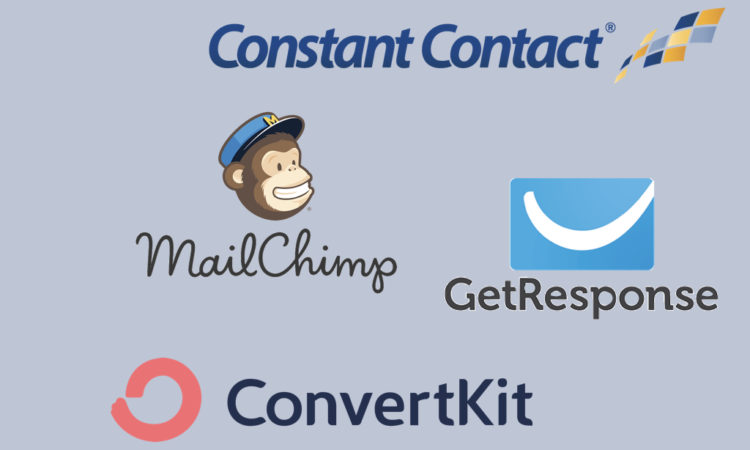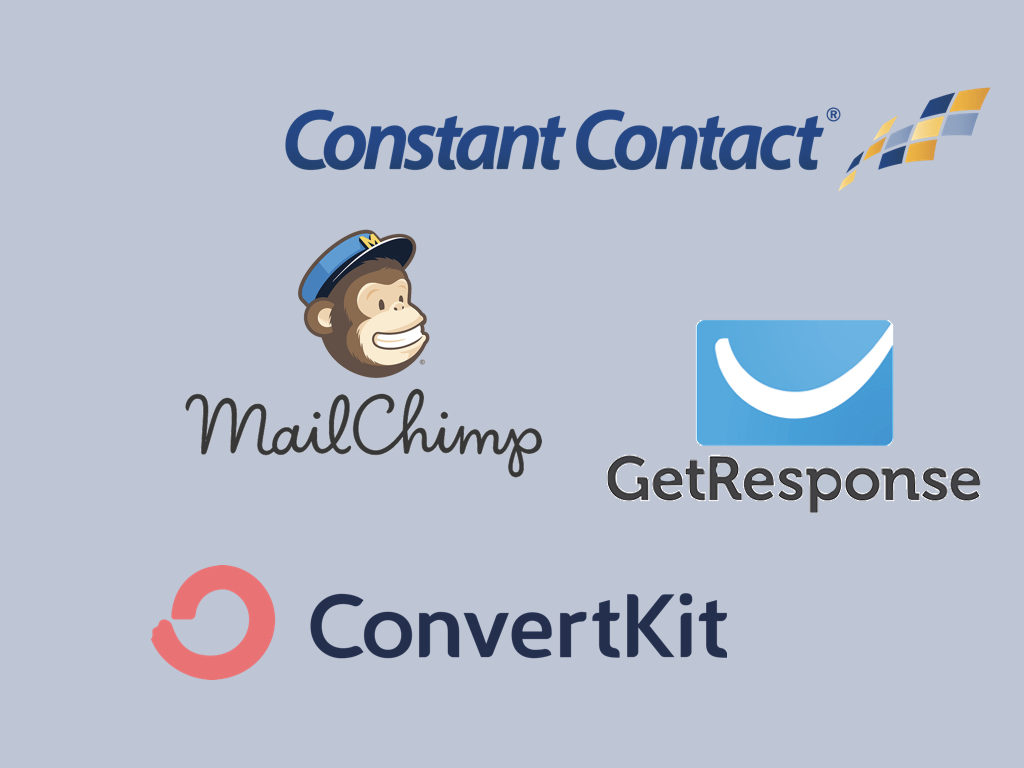GetResponse and ConvertKit are both powerful email marketing tools. GetResponse offers a broader range of features, while ConvertKit focuses on simplicity and automation.
Choosing the right email marketing platform can significantly impact your business. GetResponse caters to marketers seeking advanced tools like webinars and landing page creation. Its features are extensive, appealing to businesses of all sizes. On the other hand, ConvertKit excels in catering to creators and bloggers, providing straightforward automation and subscriber management.
Its user-friendly interface makes it easy for beginners to navigate. Understanding the differences between these platforms helps you make an informed choice tailored to your specific needs. Both tools have their strengths, so evaluating your priorities is essential for effective email marketing.

Credit: www.growthmarketingpro.com
Introduction To Email Marketing Platforms
Email marketing platforms help businesses connect with customers. They simplify sending newsletters, promotions, and updates. Two popular platforms are GetResponse and ConvertKit. Each offers unique features for users.
Rise Of Digital Marketing
Digital marketing has grown rapidly. Businesses now rely on online strategies. Email marketing plays a vital role in this growth.
- Cost-effective communication
- Direct audience engagement
- High return on investment (ROI)
Many companies use email marketing to reach customers. This method builds relationships and boosts sales.
Email Marketing In The Digital Era
Email marketing is essential in today’s digital world. It allows brands to share personalized messages. Targeted campaigns lead to higher engagement rates.
| Feature | GetResponse | ConvertKit |
|---|---|---|
| Ease of Use | Intuitive interface | User-friendly design |
| Automation | Advanced automation tools | Simple automation options |
| Pricing | Affordable plans | Flexible pricing |
Choosing the right platform matters. Consider your needs and goals. An effective email marketing tool can drive success.

Credit: www.getresponse.com
First Look At Getresponse
GetResponse is a powerful email marketing tool. It offers a variety of features designed to help businesses grow. Let’s dive into its core features and user experience.
Core Features
GetResponse boasts a range of essential tools:
- Email Marketing: Create stunning email campaigns easily.
- Automation: Set up automated workflows to save time.
- Landing Pages: Build high-converting landing pages.
- Webinars: Host webinars directly from the platform.
- Segmentation: Target specific audiences with precise lists.
Here’s a quick overview in table format:
| Feature | Description |
|---|---|
| Email Marketing | Create and send beautiful emails. |
| Automation | Automate your email campaigns. |
| Landing Pages | Design landing pages without coding. |
| Webinars | Engage audiences with live webinars. |
| Segmentation | Send targeted messages to specific groups. |
User Experience
GetResponse offers an intuitive interface. Users can navigate easily through its features.
- Dashboard: Clean and organized layout.
- Templates: A wide range of customizable templates.
- Support: Access to help resources and customer support.
Here are some key points about user experience:
- Quick setup process.
- Drag-and-drop editor for emails.
- Responsive design for mobile devices.
Overall, GetResponse is user-friendly and effective. It caters to both beginners and experienced marketers.
First Look At Convertkit
ConvertKit is a popular email marketing platform. It caters primarily to creators. Bloggers, podcasters, and freelancers benefit from its features. The interface is clean and user-friendly. Let’s dive into its core features and user experience.
Core Features
ConvertKit offers several powerful features:
- Email Automation: Set up automated email sequences easily.
- Landing Pages: Create beautiful landing pages without coding.
- Tagging System: Organize subscribers based on their interests.
- Integrations: Connect with other tools like Shopify and WordPress.
- Subscriber Management: Manage your list effortlessly.
| Feature | Description |
|---|---|
| Email Automation | Automate your email campaigns easily. |
| Landing Pages | Build pages to capture leads quickly. |
| Tagging System | Group subscribers by their behavior. |
| Integrations | Work with popular tools seamlessly. |
| Subscriber Management | Efficiently manage your email list. |
User Experience
ConvertKit shines in user experience. The dashboard is simple and intuitive. Users can navigate with ease. The setup process is quick. Here are some highlights:
- Clean Design: A clutter-free interface helps focus.
- Easy Navigation: Find features without confusion.
- Helpful Tutorials: Access guides for any feature.
- Responsive Support: Get help through chat or email.
Overall, ConvertKit delivers a smooth experience. It’s tailored for those new to email marketing. This simplicity does not sacrifice powerful features.
Feature Comparison: Getresponse Vs Convertkit
Choosing the right email marketing tool can be tough. GetResponse and ConvertKit both offer unique features. This section compares their key functionalities.
Email Automation
Email automation is essential for effective marketing. Both GetResponse and ConvertKit excel in this area.
- GetResponse:
- Advanced automation workflows
- Triggers based on user actions
- Pre-made automation templates
- ConvertKit:
- Simple automation rules
- Visual automation builder
- Tagging system for user segmentation
Templates And Design
Design matters in email marketing. Both platforms offer attractive templates.
| Feature | GetResponse | ConvertKit |
|---|---|---|
| Template Variety | Over 500 templates | Minimalist designs |
| Customization | Drag-and-drop editor | Simple text editor |
| Mobile Responsiveness | Highly responsive | Responsive layouts |
Analytics And Reporting
Analytics help track success. Both tools provide useful reporting features.
- GetResponse:
- Real-time analytics
- Conversion tracking
- Comprehensive reports
- ConvertKit:
- Basic analytics
- Subscriber growth tracking
- Simple dashboard
Choose based on your specific needs.
Pricing Battle
The Pricing Battle between GetResponse and ConvertKit is crucial for many users. Both platforms offer unique features and pricing models. Choosing the right one depends on your budget and needs.
Pricing Structures
GetResponse and ConvertKit have different pricing plans. Here’s a quick overview of each:
| Feature | GetResponse | ConvertKit |
|---|---|---|
| Free Trial | 30 days | 14 days |
| Basic Plan Starts At | $15/month | $15/month |
| Max Contacts (Basic) | 1,000 | 1,000 |
| Pro Plan Starts At | $49/month | $29/month |
| Max Contacts (Pro) | 1,000 | 1,000 |
GetResponse has a more extended free trial. ConvertKit offers affordable plans for beginners. Both platforms have scalable options for growing businesses.
Value For Money
Assessing value for money helps you make an informed decision. Consider the features each platform offers:
- GetResponse:
- Email marketing
- Landing pages
- Webinars
- ConvertKit:
- Automated email sequences
- Tagging subscribers
- Landing pages
Both platforms offer essential tools for email marketing. GetResponse includes webinars, a great bonus for marketers. ConvertKit excels in automation and user-friendly features.
Compare these tools against your budget. Think about your specific needs. This approach helps you find the best deal.
User Reviews And Community Feedback
User reviews and community feedback play a vital role in choosing between GetResponse and ConvertKit. Insights from actual users help potential customers make informed decisions. Let’s explore customer satisfaction and community support for both platforms.
Customer Satisfaction
Customer satisfaction varies between GetResponse and ConvertKit. Here’s a quick overview based on user ratings:
| Platform | User Rating (out of 5) | Pros | Cons |
|---|---|---|---|
| GetResponse | 4.2 |
|
|
| ConvertKit | 4.5 |
|
|
GetResponse users appreciate its powerful tools. Many find the automation features impressive. Some users mention the pricing is steep for advanced features.
ConvertKit users enjoy its simplicity. The platform is tailored for bloggers and creators. However, some users feel it lacks advanced automation options.
Community Support
Both platforms boast active communities that provide support. Here’s how they stand:
- GetResponse Community:
- Active forums for troubleshooting
- Webinars and tutorials available
- Responsive customer service
- ConvertKit Community:
- Strong Facebook groups for users
- Helpful resources for creators
- Fast response times from support team
Both communities offer valuable resources. Users can find answers easily. Forums and groups are welcoming and informative.
Understanding user reviews and community feedback helps in making the right choice. Each platform has unique strengths and weaknesses. Consider what matters most for your needs.
Pros And Cons
Choosing between GetResponse and ConvertKit can be tough. Each platform has unique strengths and weaknesses. Understanding these can help you make the right choice.
Getresponse Advantages
- Comprehensive Features: GetResponse offers email marketing, landing pages, and automation.
- User-Friendly Interface: Simple design makes it easy for beginners.
- Advanced Automation: Create complex workflows with ease.
- A/B Testing: Test different email versions for better results.
- Webinars: Host webinars directly from the platform.
Convertkit Advantages
- Designed for Creators: Focuses on bloggers and online creators.
- Easy Tagging System: Organize your subscribers effectively.
- Landing Pages: Create beautiful landing pages without coding.
- Subscriber Management: Simple tools for managing audience.
- Automated Sequences: Send emails automatically based on user actions.
Considerations For New Users
New users should weigh several factors before choosing:
- Budget: Compare pricing plans for both platforms.
- Learning Curve: Consider how quickly you can learn each tool.
- Support: Check customer support options and availability.
- Scalability: Ensure the platform can grow with your needs.
Take time to explore both tools. Each has unique offerings that may suit different needs.
Final Verdict
Choosing between GetResponse and ConvertKit can be tough. Both platforms offer unique features. Understanding their strengths helps in making the right choice.
Choosing The Right Platform
Selecting the best email marketing tool depends on your needs. Here are some key factors to consider:
- User Experience: GetResponse has a more intuitive interface.
- Pricing: ConvertKit offers simpler pricing plans.
- Automation: GetResponse excels in automation features.
- Support: ConvertKit provides better customer support.
Here’s a quick comparison:
| Feature | GetResponse | ConvertKit |
|---|---|---|
| User Interface | More intuitive | Simple |
| Pricing | Flexible | Transparent |
| Automation | Advanced | Basic |
| Support | Good | Excellent |
Consider what matters most for your business. If you need advanced automation, GetResponse shines. For simplicity and support, ConvertKit stands out.
Future Of Email Marketing Tools
Email marketing tools evolve rapidly. Both GetResponse and ConvertKit keep innovating. Watch for these trends:
- Artificial Intelligence: AI will enhance personalization.
- Integrations: More apps will connect seamlessly.
- Analytics: Better data will lead to smarter decisions.
- Mobile Optimization: Mobile-friendly designs will be crucial.
Staying updated with these trends helps businesses thrive. Choose a platform that adapts to future needs.

Credit: www.growthmarketingpro.com
Frequently Asked Questions
What Are The Key Features Of Getresponse?
GetResponse offers a wide range of features, including email marketing, automation, landing pages, and webinars. Its user-friendly interface makes it easy for beginners. Additionally, it provides advanced analytics to track campaign performance, helping users optimize their strategies for better engagement and conversions.
How Does Convertkit Compare To Getresponse?
ConvertKit focuses primarily on email marketing for creators, offering robust automation and tagging features. While GetResponse provides a broader suite of tools, ConvertKit excels in simplicity and user experience. Creators may prefer ConvertKit for its ease of use, while businesses may favor GetResponse for its comprehensive features.
Which Is Better For Beginners, Getresponse Or Convertkit?
For beginners, GetResponse may be more suitable due to its intuitive interface and extensive resources. It provides templates and tutorials that help users quickly grasp email marketing basics. ConvertKit, while user-friendly, is more tailored for creators, making GetResponse a more versatile option for newcomers.
Are Pricing Plans Different For Getresponse And Convertkit?
Yes, GetResponse and ConvertKit have different pricing structures. GetResponse offers tiered pricing based on features and contacts, providing flexibility. ConvertKit has a straightforward monthly subscription, which may be more appealing for creators focusing solely on email marketing. Evaluating your needs will help you choose the right plan.
Conclusion
Choosing between GetResponse and ConvertKit ultimately depends on your specific needs. Both platforms offer unique features that cater to different audiences. Evaluate your goals and budget carefully. Consider testing both options to see which aligns best with your marketing strategy.
Make an informed decision to boost your email marketing success.

